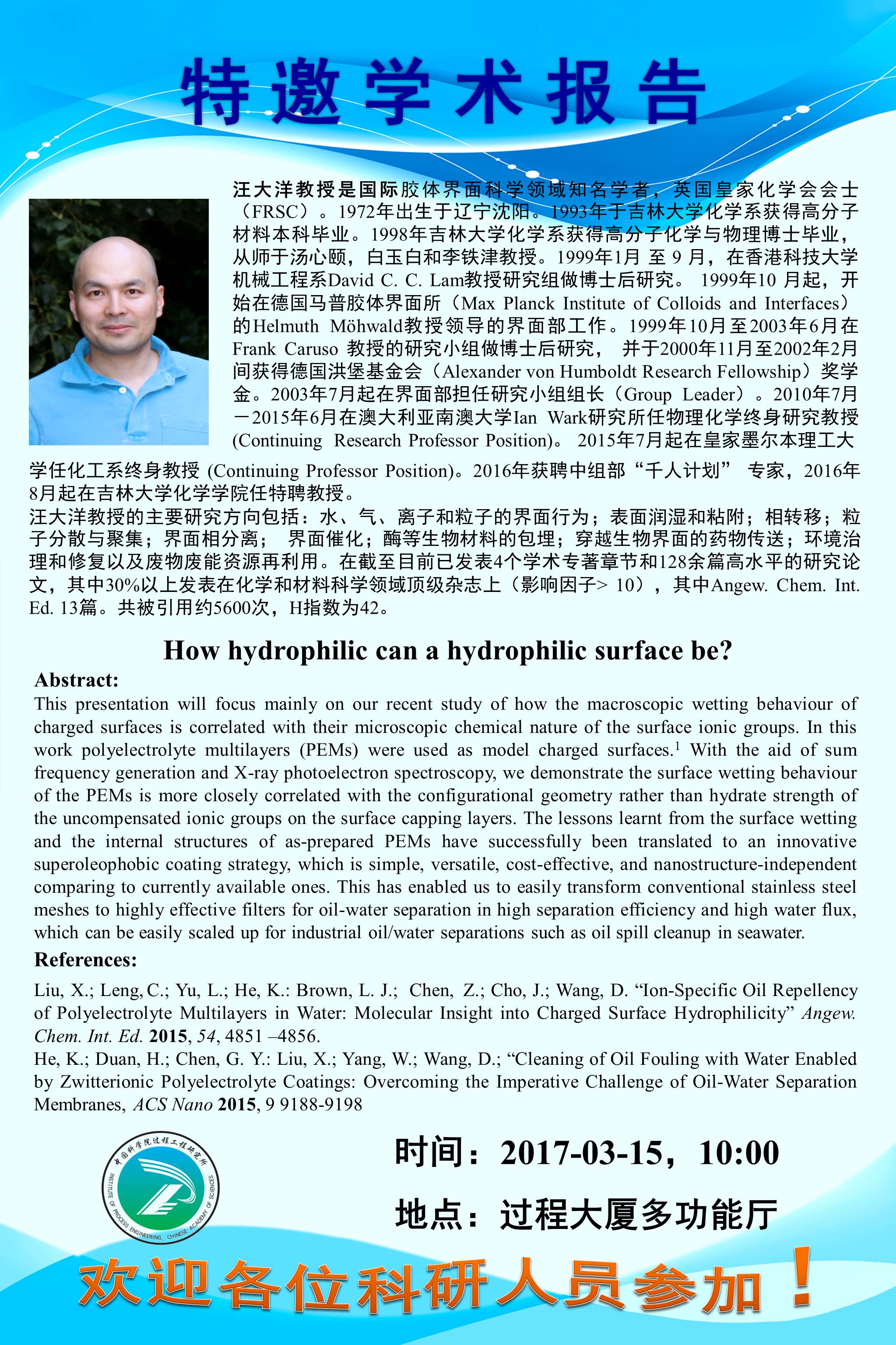Speaker: Prof. WANG Dayang Date and Time: 10am, March 15, 2017 Venue: Multifunction Hall, IPE Building Title: How hydrophilic can a hydrophilic surface be? Abstract: This presentation will focus mainly on our recent study of how the macroscopic wetting behaviour of charged surfaces is correlated with their microscopic chemical nature of the surface ionic groups. In this work polyelectrolyte multilayers (PEMs) were used as model charged surfaces.1 With the aid of sum frequency generation and X-ray photoelectron spectroscopy, we demonstrate the surface wetting behaviour of the PEMs is more closely correlated with the configurational geometry rather than hydrate strength of the uncompensated ionic groups on the surface capping layers. The lessons learnt from the surface wetting and the internal structures of as-prepared PEMs have successfully been translated to an innovative superoleophobic coating strategy, which is simple, versatile, cost-effective, and nanostructure-independent comparing to currently available ones. This has enabled us to easily transform conventional stainless steel meshes to highly effective filters for oil-water separation in high separation efficiency and high water flux, which can be easily scaled up for industrial oil/water separations such as oil spill cleanup in seawater. References: 1. Liu, X.; Leng, C.; Yu, L.; He, K.: Brown, L. J.; Chen, Z.; Cho, J.; Wang, D. “Ion-Specific Oil Repellency of Polyelectrolyte Multilayers in Water: Molecular Insight into Charged Surface Hydrophilicity” Angew. Chem. Int. Ed. 2015, 54, 4851 –4856 2. He, K.; Duan, H.; Chen, G. Y.: Liu, X.; Yang, W.; Wang, D.; “Cleaning of Oil Fouling with Water Enabled by Zwitterionic Polyelectrolyte Coatings: Overcoming the Imperative Challenge of Oil-Water Separation Membranes, ACS Nano 2015, 9 9188-9198 
|